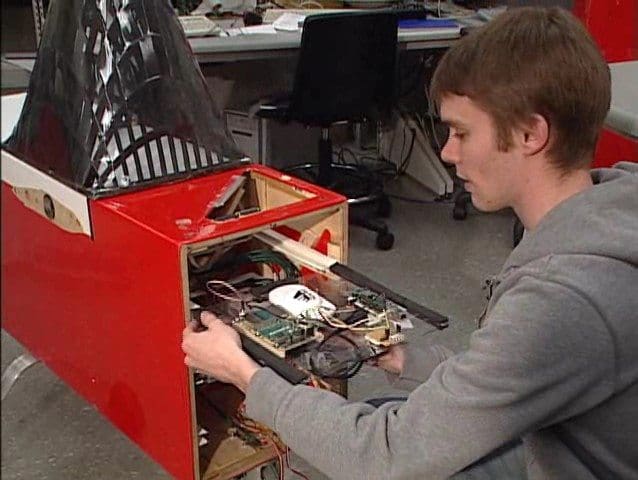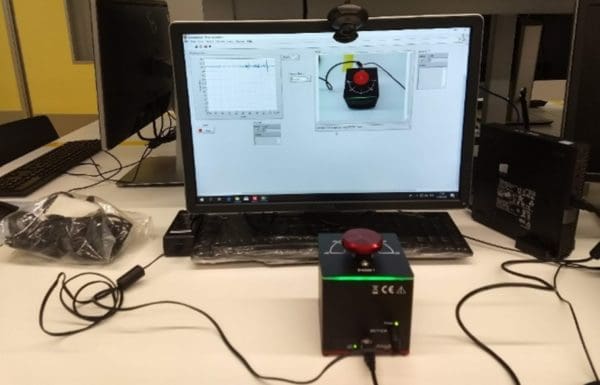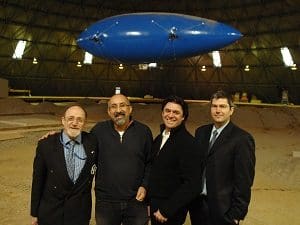
Developed and organized a miniGEMS STEM Summer camp for approximately 26 middle school girls.
Challenge
Help motivate middle-school girls into pursuing an education in engineering by using advanced unmanned aerial vehicles (i.e., drones) for a more captivating experience.
Solution
Quanser Unmanned Vehicle Systems
Result
The work of Dr. Michael Frye truly embodies the phrase “advanced engineering”. Throughout his career, he has worked on some of the most sophisticated, complex, and ambitious engineering systems in any modern field. His work has taken him through industry leaders such as Lockheed Martin and AT&T.
Dr. Frye is the Department Chair of Engineering at the University of the Incarnate Word (UIW) in San Antonio, Texas. He also co-directs the Autonomous Vehicle Systems (AVS) Laboratory, along with Dr. Sreerenjini Nair, Assistant Professor of Physics. The AVS Lab was used to conduct very high-level research in autonomous vehicle control, and they were the recipient of significant grants from various agencies including the Department of Defense. In addition to the effort and success he has achieved in cutting-edge unmanned vehicle research, Dr. Fry also uses his ingenuity in our underserved communities.
The struggle to excite children about the potential and importance of STEM fields is all too familiar. Universities, colleges, and companies have responded accordingly with countless programs introducing robotics, coding, Makerspace projects, and other contemporary technologies to introduce our kids to the fun of engineering. As good as these programs are, the fundamental question of “is fun enough?” remains unanswered. College STEM programs still struggle to be seen as a preferred destination for the broader youth population.
Frye and Nair first connected with Quanser in 2014. Initially, the context was principally the research application of Quanser’s unmanned aerial and ground vehicles. Since then, they adopted the Unmanned Vehicle Systems research platform and various other systems – leading to a significant increase in the research capacity of the AVS Lab. The AVS Lab is now one of the largest academic labs of its type in the world. Frye and Nair also use the AVS Lab to host community outreach programs with this question in mind:
How can highly sophisticated engineering systems offer a more motivating and more meaningful introduction to engineering and STEM?
Conceptually, the collaboration with Quanser was a perfect match. From a technical standpoint, Quanser drones, unlike commercially available vehicles, are designed specifically for academic use with the controllability and safety that would be essential for operation by a broad range of users, e.g., students. The software interface also allows students to see and understand how a modern smart drone operates and experience the true impact of this technology. The potential to introduce challenging civilian applications like cyber-physical systems or the Internet of Things (IoT) is much easier when students can see and interact with their inner smarts.
As a relatively small, principally undergraduate institution, some of the most active users of these advanced systems were undergrads and the extension of the application from pure research to education typically occurs naturally. Universities have historically maintained clear boundaries between core undergraduate programs and the research lab, but Frye and Nair are among the growing number of institutions choosing to blur this line to provide students with a much richer and appropriately intense learning experience.
The next challenge for Frye and Nair was the following:
Can they take the same high-impact introduction to advanced engineering to high school and even middle school?
One immediate outreach application of the UVS lab was the UIW STEM Summer Camp for high school students where the Lab was used for an introduction to robotics. But a more ambitious and potentially more critical outreach direction is within the AVS Lab’s miniGEMS STEM program. GEMS stands for Girls in Engineering Math and Science.
miniGEMS is a free five-day STEM Summer camp organized and run by the AVS Lab for approximately 26 middle school girls. In the Summer of 2015 and 2016, the camp was planned, coordinated, and directed by the Frye and Nair. The primary goal of the camp is to introduce more females to the field of Engineering through robotic projects and competitions, guest speakers, and site visits. The students also had the opportunity to build and compete using the SeaPerch underwater robots, provided by a grant from the Office of Naval Research. Parents are provided opportunities to learn about STEM fields and how to apply to help their daughters apply for college.
miniGEMS targets underrepresented middle school students and provides an opportunity for students to attend a STEM camp without having to meet an arbitrary grade requirement, pay an application fee, have transportation, or even have an interest in STEM fields. All miniGEMS students are provided transportation from their middle school by a UIW shuttle, all meals are provided, and the students can compete for prizes from visiting engineering companies. The miniGEMS camp offers middle school girls a chance to do advanced engineering in a way that thematically makes sense and is engaging. Robotic projects, guest speakers, field trips, and direct access to the UVS Lab form the core of the program. Girls engage with not just the technology of advanced engineering but the people and community of advanced engineering.
What is next? Frye and Nair have been developing a strategy and have begun seeking support and funding to empower the teachers of the earlier grades to talk about engineering more confidently to their students. Teachers remain a critical source of guidance for children and this new initiative, through a rich immersion in advanced engineering via the AVS Lab. What is an engineering and why is it so important and beneficial to society are the questions that Frye and Nair hope to answer more completely than ever before.
Using expensive research equipment to teach middle school students would have been unheard of two decades ago. However, robots and computers used to be exclusive to only research labs when they first appeared and now, these are very common. Therefore, using advanced technology for outreach is a natural behavior among engineering faculty. What makes the work of Frye and Nair particularly unique is the purposeful, conscious, and conscientious driving of these advanced technologies and methodologies to ensure a quicker and more profound impact on our youth and underserved communities. Sometimes our best researchers are our best teachers.


